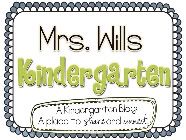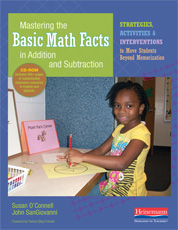I am so excited to be participating in the Math Stations Blog Party. I even created my own blog for this event after being a blog stalker for months. I hope I can get the hang of things because there is a lot I would like to share. We are reading the book, Math Work Stations by Debbie Diller.
 click on book to order or view online
click on book to order or view online
Chapter 1
I think what I learned the most from this chapter was the importance of modeling and not expecting your class to be able to play games on the SAME day as you introduce them to the game. I have been trying to do a Daily 5 Math where I do a whole group lesson, introduce a game and let them go to "centers". They are given a choice where to go and they tend to choose the same games over and over. Now I realize that we need to be doing stations and I need to be modeling how to play the game at least a day in advance of them going to stations. So on to my checklist:
1. Materials used by the teacher first, then placed in the station: YES
2. Materials do not change weekly, but rather changed to reflect the students learning objectives: I changed the materials when we learned a new skill, which wasn't weekly. But, I am guilty of keeping materials out too long as I was packing up this year and still had pumpkin activities in the stations.
3. All students go to stations daily: YES, as long as we didn't have something that made us skip our math time (library, counselor, computer lab, etc.)
4. Materials are differentiated: Some have differentiated materials and others didn't. Need work here.
5. The teacher observes work or meets with differentiated math groups: No, I wasn't always able to meet every day with students. I tried, but sometimes other things came up and this is the place where the sacrifice was made.
Chapter 2
Organization....I need lots of work here. I have been purging, but obviously not enough. I think a big mistake I made this year was taking away a place to store math manipulatives in order to put out math games.

The tubs above held games for the categories (strategy games, fact games, paper practice, math tools, number games) and the only ones that actually held math manipulatives were the yellow number tools. I had game pieces, dice and spinners in the containers to the right and they are not labeled (which they will be next year) and most of my math manipulatives were stored in my closet, not accessible to the children. It was hard to put games into the above categories and the whole Daily 5 Math did not work well for me. After reading Diller's book, I realize I need to have math manipulatives and work stations out at the same time. The tubs above are perfect for holding math manipulatives and I plan to add a shelf with numbered tubs to hold the math stations for next year. The tubs did not work well for the games because they are smaller than a sheet of paper. I will get tubs that are deep enough and wide enough to hold games and work mats and number them. I will put them on a separate shelf for the work stations.
So I plan to spend some of my summer going back up to the school and cleaning out and organizing my closet to make things easily usable for math time.
Link over to Mrs. Wills to attach your post or printable item!



